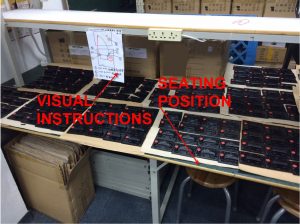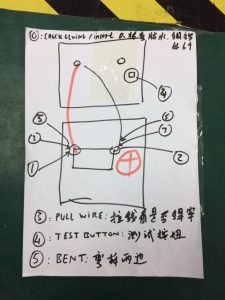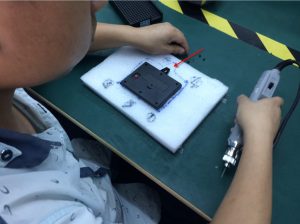 A few weeks ago, I wrote How To Ensure Quality In Chinese Factories By Writing Work Instructions.
A few weeks ago, I wrote How To Ensure Quality In Chinese Factories By Writing Work Instructions.
(By the way, we have recently published a number of resources on the CMC website. If you are interested in good factory management, you should probably go have a look at them.)
In that article, I listed 7 reasons why the work instructions (WIs) I see in Chinese factories are usually worthless.
- They are often way above the head of the operator, who would have a hard time referring to them if needed.
- Work instructions are prepared for ISO 9001 auditors and for customers, with the assumption that they don’t look carefully into the effectiveness of those instructions.
- There are often no image/photo. With text only, it takes more work to check and ensure that they correspond to the product being made. As a result, instructions are not engaging and operators don’t read them.
- The group leaders and supervisors know the instructions are meaningless, so they don’t use them as a standard. Ideally they would look periodically to see if an operator respects the applicable standard.
- Important quality considerations are not followed – for example checking 1 in 10 pieces for dimensional conformity.
- Important safety considerations are not followed – for example putting one’s hands in certain places to ensure they are never caught in a stamping machine.
- Important maintenance considerations are not followed – for example opening a compartment and cleaning the equipment.
Unfortunately, everything we do for clients is covered by strict non-disclosure agreements. I can’t show any example of what we do in factories.
However, I just found some good real-life examples on IMPROVING QUALITY DURING MANUFACTURING IN CHINA WITH LEAN TOOLS.
Here is where their company’s WIs are placed:
It is easy for the operator to look at the assembly work instructions. Good.
Here is what a WI looks like:
Easy to understand. Visual. It does the job! (Another sheet of paper containing quality & safety information would be a nice addition.)
Here is a fixture to hold the part, to ensure the operator doesn’t place it upside down:
Nice design. It is physically impossible to misplace the part. That’s good mistake proofing. Cheap and fast to prepare, and the worker has no incentive to skip it.
—
What I don’t fully agree with, however, is the general view that workers can’t be counted on to be part of improvements. Everything needs to come from the top. Christopher Oliva, the author, writes:
Assume your workers are human robots who got no AI software in their “chipset”, so they necessarily need you to provide them with a good embedded software and framework.
Comparing workers to robots is a bit misleading.
What do I disagree with? With a bit of training (to open their minds to all the possibilities out there) and a bit of coaching, many operators can design their own work instructions. It takes more time, for sure, but it ensures they fully understand, and comply with, the WIs.
What do I agree with? It is management’s responsibility to create the right system. Too many Chinese manufacturers hire workers, provide no training, and let them organize their work as they wish. In the managers’ minds, this is fine because they pay by the piece (lower productivity doesn’t hurt them too badly).
This approach is still the most prevalent here… To use Christopher’s image, too many manufacturers assume they hire robots that are unable to upgrade their software. That’s sad.
I guess one can place factories in different buckets:
- Average situation: factory hires workers, doesn’t give them training or direction
- Worse than above: factory hires workers, gives no training, puts up work instructions no one looks at, and pretends to be well managed
- Much better: factory hires workers, prepares work instructions, trains workers to follow them (that’s what Christopher’s company have done, and that’s better than 99% of factories out here)
- Ideal situation: factory hires workers, gives them training, coaches them into preparing and them improving their work instructions (we have done this in a few instances so it is possible, but that’s virtually nonexistent)
What do you think?




Another reason:
#8. Work instructions are hidden away in the supervisor’s office, or displayed in a location where they can’t easily be viewed by the operators.
Oh yes, definitely… They start to search for it… At which point it is obvious that procedure is not really followed and “doesn’t count”.